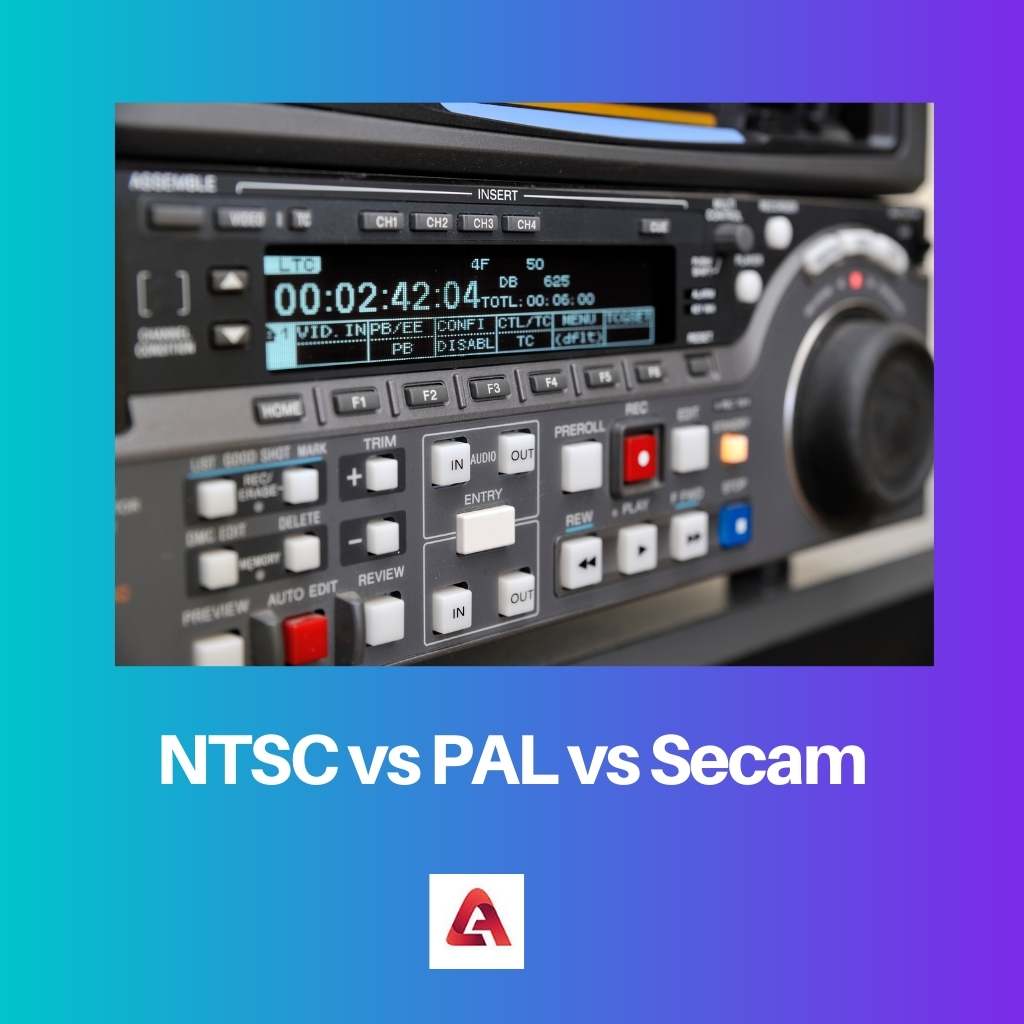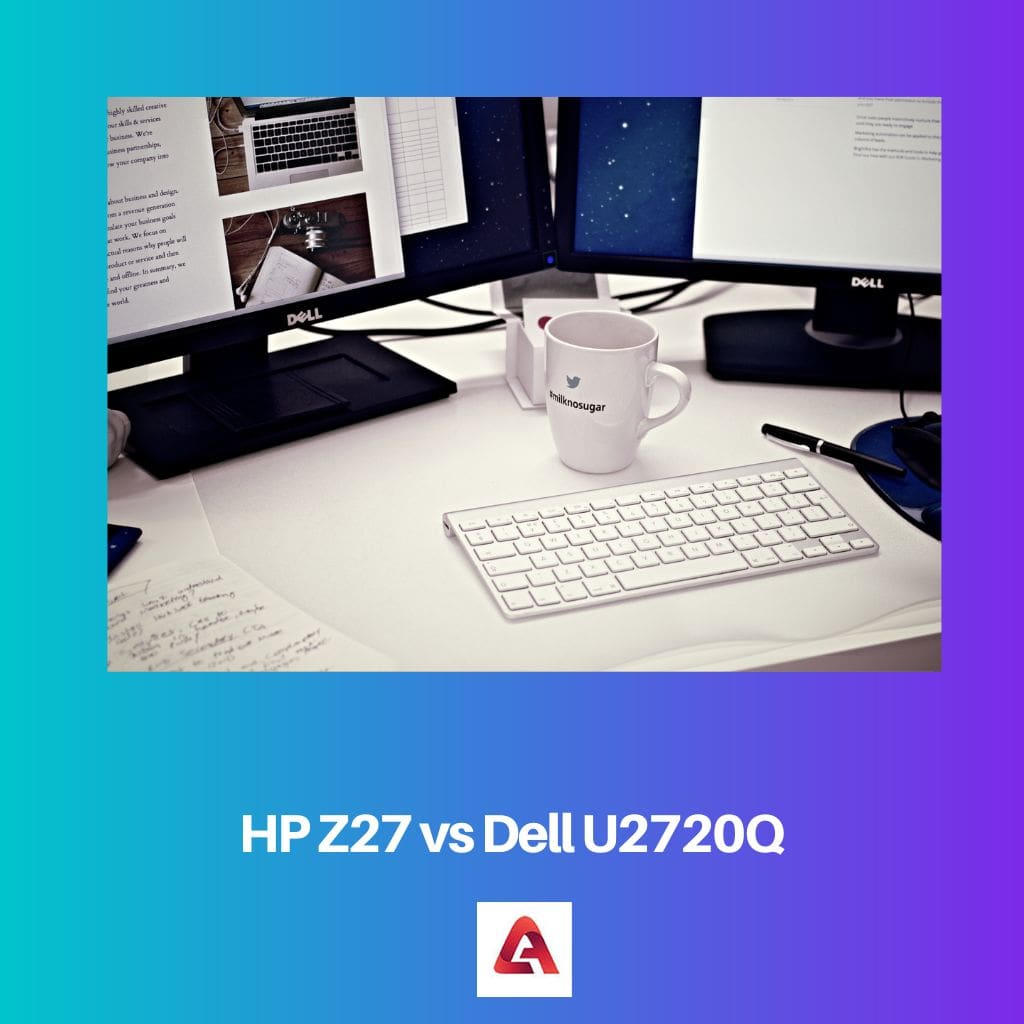At present, there are three different TV standards that are known, and all these are incompatible with each other. These standards are used differently based on the distribution of the countries.
As it is very difficult to transform the data encrypted inside to any other standard. To change and transfer the data, the video must be changed according to the required standards.
Key Takeaways
- NTSC, PAL, and SECAM are analog television broadcasting standards used worldwide.
- NTSC operates at 30 frames per second with a resolution of 525 lines, while PAL uses 25 frames per second and 625 lines, and SECAM has 25 frames per second and 625 lines.
- Compatibility issues may arise when playing media or using equipment across these different broadcasting standards.
NTSC vs PAL vs Secam
NTSC, PAL, and SECAM are three different analog television broadcasting systems used in different parts of the world. NTSC has a frame rate of 30 fps and a resolution of 525 lines, and it is used in North America, parts of South America. PAL has a frame rate of 25 fps and a resolution of 625 lines, and it is used in most of Europe, Asia, Africa, and Australia. SECAM has a frame rate of 25 fps and a resolution of 625 lines, and it is used in some parts of Europe, Asia, and Africa.

NTSC is the short term used for National Television Standard Committee and was developed in the year around 1954.
The television standard was developed by the United States of America, and it is the oldest standard known and existing. Around 33 different countries use the NTSC television standard.
PAL is the short-term used for Phase Alternating Lines, and the television standard was developed in Europe, the United Kingdom, and Germany.
The country developed it in the year 1967, and the advantage of it was that it has a greater resolution that helps in getting good picture quality.
Secam is the short term used for Sequential Couleurmmoire, and it is the third television standard developed by France in the same year as PAL.
All the main and key elements of the standard are the same as that of PAL except for the color transmission, which happens on a sequential basis.
Comparison Table
| Parameters of Comparison | NTSC | PAL | Secam |
|---|---|---|---|
| Developed In | United States of America | Europe, United Kingdom | France |
| Number of lines used | 525 | 625 | 625 |
| No of frames/second | 60 | 50 | 50 |
| Variants | 4.43, J, and M | B, D, G, H, I, N, M, and NC | B, G, D, K, K1, and L |
| Color Bust | 9 cycles | 10 cycles | Cycles of Red and blue |
| Sub carrier frequency | 3.58 MHz | 4. 43 MHz | 4.25 MHz |
| Price | Medium range | Expensive | Cheap |
| Color Info Transformation | I, Q or U, V | U, V | Db, Dr |
| Studio Mixing | Most easy | Medium easy level | Most difficult |
What is NTSC?
NTSC was the very first television standard that was developed. The country behind this was the United States of America and Japan. They developed it in the year 1954 which was very early of its kind.
The television standard is incompatible with other standards, and they have very different standards for conversions.
They use about 525 lines per second for transmission, and even the frames used per second by it is approximately 50 in number.
The resolution of the picture that determines the video qualities are in three different types:- 720 x 480; 704 x 480; 352 x 480; 352 x 240.
It is used in near about 33 different countries, including – Costa Rica, the Philippines, Burma, Barbados, Jamaica, Venezuela, South Korea, and many others.
It is the easiest standard for studio mixing and costs in the medium range.
What is PAL?
PAL is the second television standard that was developed, and it was developed in Europe United Kingdom.
The country developed it in 1967, and the increased benefit was that the picture resolution used in the standard was high, which increased the video quality.
The picture resolution used in the standard is – 720 x 576; 704 x 576; 352 x 576; 352 x 288.
The complete term used for the acronym is Phase Alternating Line. The standard uses about 625 lines per second and they have a frame rate of about 25 Hz. The variants used for the transmission of PAL are B, D, G, H, I, N, M, and NC.
The different countries that use the PAL as their television standard are – Algeria, Australia, Austria, Brazil, China, Hong Kong, Iceland, India, Indonesia, Ireland, Israel, Pakistan, Paraguay, Portugal, Qatar, Rumania, Swaziland, Sweden, Switzerland, Thailand, Turkey, Uganda, United Arab Emirates, United Kingdom, Uruguay, Yemen, Zimbabwe and many more.
What is Secam?
Secam is the third and the last television standard that was ever developed. The standard was developed by France and in the year 1967. The acronym stands for Squentiel Couleurmmoire.
The main or key elements of the Secam are almost the same as that of the PAL television standard. The only difference between PAL and Secam to be found in the way of transmitting color info is that Secam does it sequentially.
The bandwidth and the resolution used by the Secam are 720 x 576; 704 x 576; 352 x 576; 352 x 288.
The frame rate and the number of frames per second are both relatable that is frame rate is about 25 Hz, and the frames per second are about 50.
The places using Secam as their television standards are – Afghanistan, Benin, Burkina Faso, Bulgaria, Burundi, Central African Republic, Chad, North Korea, Poland, Russia, Rwanda, Saudi Arabia, Senegal, Syria, Togo, Tunisia, Vietnam, Western Samoa, Zaire, and many others.
Main Differences Between NTSC and PAL and Secam
Developed In
- The United States of America developed NTSC, the first TV channel transmission standard.
- Europe and the United Kingdom developed PAL, which was the second TV standard.
- France developed Secam, which is the third TV transmission standard known.
Number of lines used
- NTSC uses around 525 lines for transmission purposes.
- PAL uses about 625 lines for transmission purposes.
- Secam uses the same number of lines as of PAL i.e. about 625 in number.
No of frames/second
- The number of frames used by NTSC per second is about 60.
- The number of frames used by the PAL per second is 50.
- The number of frames used by the Secam is around 50 per second.
Variants
- The variants used for the transmission of NTSC 4.43, J, and M.
- The variants used for the transmission for PAL are B, D, G, H, I, N, M, and NC.
- The variants used for the transmission for Secam are B, G, D, K, K1, and L.
Color Bust
- The number of cycles of the color bust in NTSC is 9 cycles.
- The number of cycles of the color bust in PAL is 10 cycles.
- The number of cycles of the color bust in Secam is the blue and red color.
Subcarrier frequency
- The subcarrier frequency used by NTSC is 3.58 MHz.
- The subcarrier frequency used by PAL is 4.43 MHz.
- The subcarrier frequency used by Secam is 4.25 MHz.
Price
- The price range of NTSC lies in the medium range.
- The price range of PAL is quite expensive.
- The price range of Secam is very cheap.
Color Info Transformation
- The color info transforming of NTSC is I, Q or U, V.
- The color info transforming of PAL is U and V.
- The color informing of Secam is Db and Dr.
Studio Mixing
- The studio mixing in NTSC is very easy.
- The studio mixing in PAL lies in between medium levels.
- The studio mixing in Secam is very difficult to perform.




